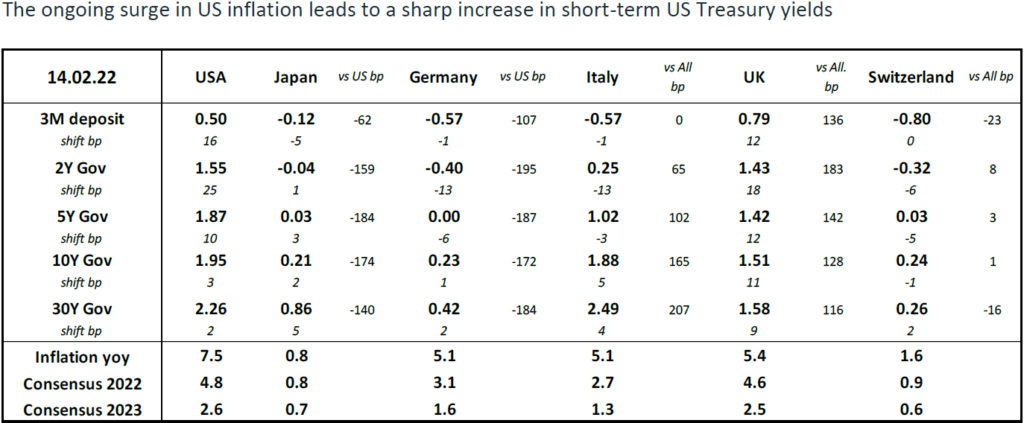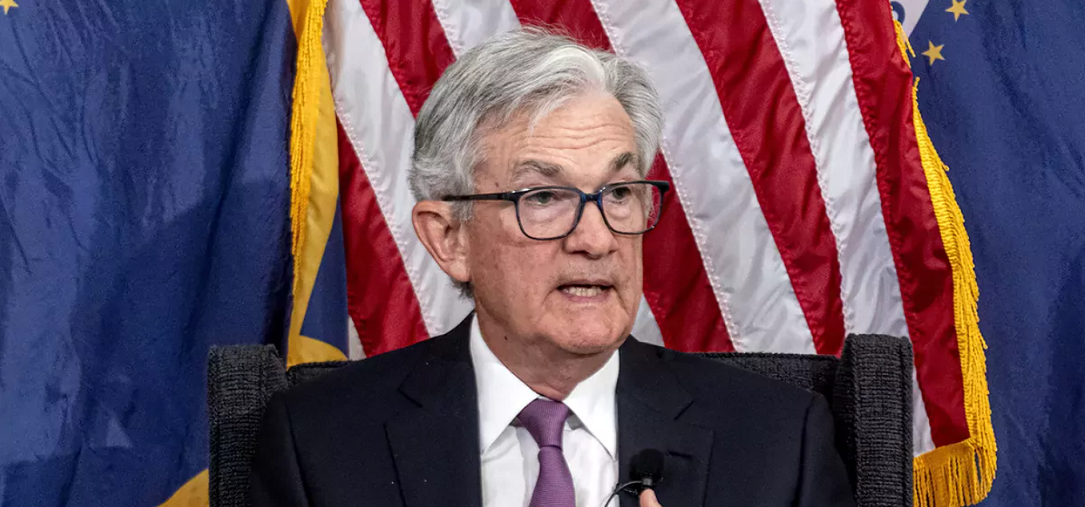
François Christen
Chief Economist
Escalating geopolitical tensions interfere with the inevitable increase in long-term interest rates.
Bonds, which have been in trouble since the beginning of the year, continued their slump following the publication of the latest inflation figures in the USA. The increase in consumer prices reached 7.5% year-on-year in January. Excluding energy and food, inflation was 0.6% month-on-month and 6% year-on-year, a pace not seen since 1982! While energy, food and durable goods prices play a major role in this surge, service prices have not been spared (0.4% month-on-month, 4.1% year-on-year). In this category, rents are expected to continue rising under the influence of a strong increase in residential housing prices. A return of inflation to Fed’s 2% target will take time.
The increase in energy prices amidst an increasingly worrisome geopolitical context and the tightening of the U.S. labor market are preventing any spontaneous reversal of inflation. This should force the Federal Reserve to act decisively to curb the price-wage spiral that has begun to develop. Accordingly, the FOMC could raise the Fed funds rate by half a percent, between 0.5% and 0.75%, at its March 15-16 meeting. This scenario is now expected by most traders and investors, as shown by CME futures that forecast a policy interest rate close to 1.75% by the end of 2022. The yield on the 2-year T-Note has thus risen from 0.75% at the beginning of the year to nearly 1.6% today.
The sharp rebound in short-term yields heralds an quick monetary tightening cycle reminiscent of the Federal Reserve’s aggressive action in 1994. At that time, the spread between the Fed funds rate and the 2-year yield reached 2%, while today it is around 1.5%. This historical precedent suggests that further increase in short-term interest rates cannot be ruled out, but that we have already come a long way. As for long-term debt, the yield on the 10-year T-Note rose above 2% before falling back in the face of the “Russian peril”. A cooling of geopolitical tensions could take the yield above 2.25% in the coming months, but Vladimir Putin’s ambiguous and bellicose stance may further support safe havens assets such as Treasuries and gold in the near future.
In Europe, the yield on the 10-year German Bund reached 0.3% before falling back in the face of escalating tensions between Russia and NATO countries. In this turbulent context, the risk premium on Italy’s public debt continued to rise, pushing the spread between the Bund and the 10-year BTP above 160 basis points, although the ECB sought to allay the fears fanned by the last Governing Council meeting. An increase in the deposit rate currently set at -0.5% is likely before the end of the year, but the cracks that have begun to appear in the euro sovereign capital market should prompt the ECB to show restraint in raising rates and flexibility in the adjustment of asset purchases.
Beyond euro area, Swiss government bonds are still trading in close alignment with the German Bund. Tensions drove the UK Gilt yield above 1.5%. In the corporate bond market, risk premiums increased slightly. The average G-spread is around 1.1% for investment grade corporate bonds and 4.25% for the high yield segment.










